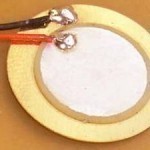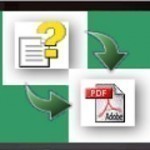DHCP and Remote Access Overview When a remote computer connects to a remote access server (RRAS), it is automatically provided with an IP address when the Point-to-Point Protocol (PPP) connection is established. You can configure the RRAS server to allocate IP addresses to remote clients from: A static range of IP addresses: This method is usually implemented when there are no internal DHCP servers. An existing DHCP Server: This is achieved by relaying clients to the DHCP server for IP address allocation. If you have an internal DHCP server, you Read More
ADSL (Asymmetric Digital Subscriber Line)
ADSL is the acronym for Asymmetric Digital Subscriber Line. ADSL is a loose set of protocols that allows for high speed Internet access over normal copper telephone lines or what is more commonly known as POTS (Plain Old Telephone Service). This is possible because the signals are sent digitally instead of through analog waves. ADSL is known as asymmetric because the download and upload speeds are not symmetrical with download speeds being averagely faster than upload speeds. Upstream data speeds are lower because requests for web pages normally do not Read More
DNS Cache
DNS (Domain Name Server) is the web server used to resolve a website’s name to its Internet Protocol (IP) address. DNS servers across the Internet are either considered authoritative with regards to a website name and corresponding IP address or are required to verify the IP address with another DNS server that will in turn request verification from another DNS server if it is not the authoritative resource for the name resolution. As a result, Internet performance could be significantly impacted if there were not some method around the large Read More
Email Encryption Software
Millions of people worldwide unknowingly send unsecured emails to each other every day. What they do not know is that these emails can be intercepted and read by any common hacker who takes an interest in their personal communications. It probably does not matter if a hacker reads the majority of your emails but if a hacker happens to read an email that includes your credit card information or other important data, you could find yourself in some serious trouble. In this article, we will explain how email encryption works Read More
Piezoelectric Transducer

A piezoelectric transducer is a device that converts electricity into mechanical forces or vibrations. Although piezoelectric transducers have other uses, ultrasonic devices require them. Piezoelectric transducers usually converts electricity into vibrations and vibrations into electricity, although this is not always the case. They rely on two phenomena known as “electrostriction” and “the piezoelectric effect.” How Piezoelectric Transducers Work Piezoelectric transducers are made of both positive and negative elements that align themselves when in the presence of an electric field. This property causes them to actually change dimensions. When an alternating Read More
g2mdlhlpx.exe

The original g2mdlhlpx.exe is a part of Citrix GoToMeeting and GoToWebinar. Malware creators have copied this filename in an attempt to “hide” from PC owners and system administrators. Someone who has Citrix GoToMeeting or GoToWebinar installed does not have to worry about this process. However, if he/she does not have either of these Citrix products installed on his/her PC, he/she will have to clean this malware from the PC. The legitimate g2mdlhlpx.exe executable installs in the C:Documents and Settings%user account% folder. Rogue versions of this executable process are sometimes found Read More
958 and 959 NXX
The 958 and 959 prefixes (NPA-958-XXXX and NPA-959-XXXX) are used as test numbers. 958 numbers are used for most testing, 959 numbers are reserved for inter-exchange carrier testing. 959 numbers can only be reached by being pre-subscribed to that inter-exchange carrier or using an access code (101xxxx-1-NPA-NXX-XXXX). In other words, to dial an AT&T 959-XXXX number, you would dial 1010288-1-NPA-959-XXXX. To dial an MCI 959-XXXX number, you would dial 101022-1-NPA-959-XXXX. Test numbers tend to start at NXX-1000 or NXX-6900.
How to Convert CHM to PDF

A CHM (Microsoft Compiled HTML Help) file is a type of file that contains an index file, several HTML files, and a hyperlinked table of contents. Essentially, CHM files can be opened in a browser and allow users to navigate to individual paragraphs or pages by selecting the appropriate hyperlink in the Table of Contents. CHM files are mostly used for tutorials and help files, but are also frequently used for e-books. What is PDF? A PDF (Portable Document Format) file is one that is specifically used for e-books, Read More
SS7 (Signaling System 7)
SS7 (Signaling System 7) is a standard for control signaling in the PSTN (Public Switched Telephone Network. SS7 signaling is done out-of-band, meaning that SS7 signaling messages are transported over a separate data connection. This represents a significant security improvement over earlier systems which used in-band signaling. The first CCS protocol was the Signaling System 6, defined by the ITU-T in 1977. SS 7 replaced the SS6 in 1980. SS6 had certain limitations, since its signal wasn’t amendable to digital systems. Both SS6 and SS7 are called CCS (Common Channel Read More


Share on: